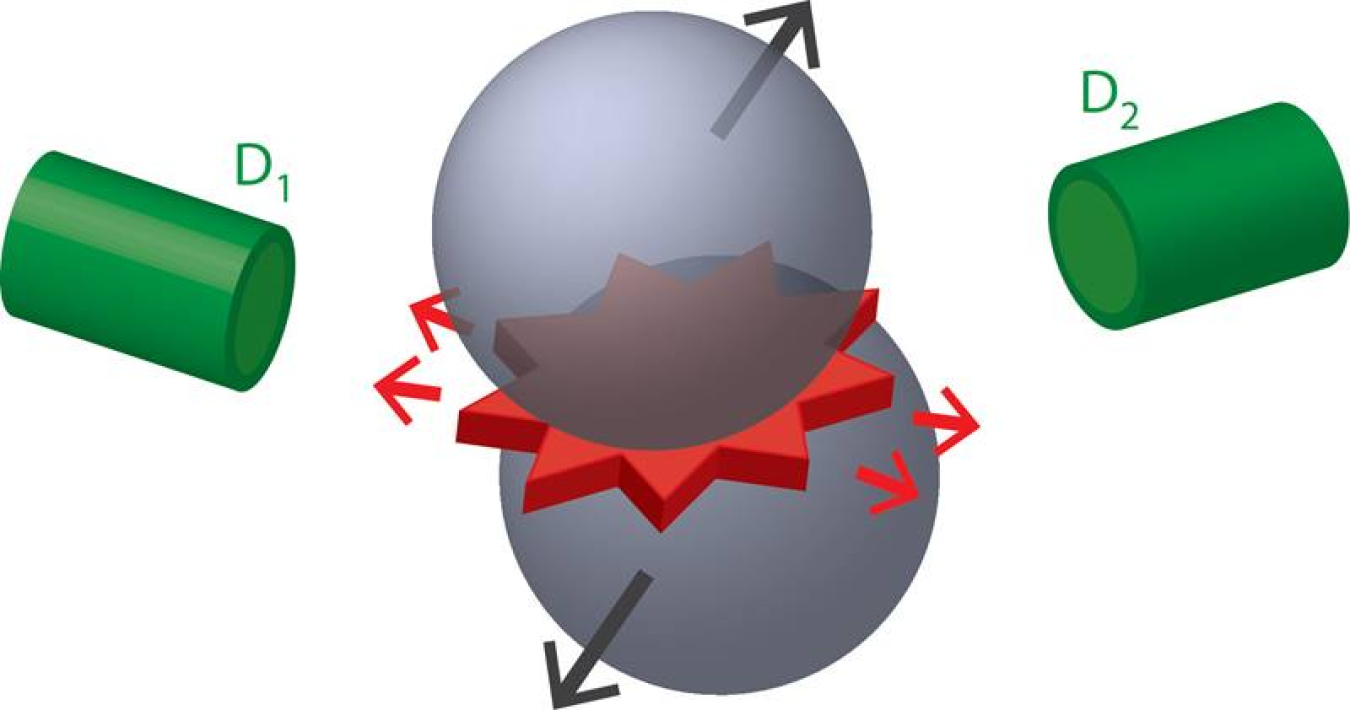
The Science
When the nuclei of atoms are about to collide in an experiment, their centers never perfectly align along the direction of relative motion. This leads to collisions with complex three-dimensional geometry. Emissions from the dense hot region of nuclear matter form patterns during a collision. In relation to the geometry of the collisions, the patterns of emissions offer insights into characteristics of the compressed matter. The proposed deblurring strategy can reveal the emission patterns as if the initial nuclear centers were under a tight control in an experiment.
The Impact
The proposed strategy offers a new way to analyze and present data from the collisions of atomic nuclei. The strategy may make it easier for physicists to arrive at qualitative conclusions from collision data when the results from an experiment refer directly to the geometry of a collision. Until now, this sort of direct reference to collision geometry was only possible with theoretical simulations. This means simulations can focus on what researchers had believed was beyond the reach of experiment. This will help scientists to better understand compressed matter. The optical strategy may also help in nuclear experiments where the methodology makes it hard to obtain the desired information.
Summary
The deblurring strategy was inspired by a deblurring algorithm used in optics experiments to sharpen images. Outside of nuclear science, deblurring is used to decipher speed-camera photos. It was suggested by a research collaboration between the Facility for Rare Isotope Beams, a Department of Energy (DOE) Office of Science user facility at Michigan State University, and RIKEN Nishina Center in Japan. The strategy is an effective means of finding triple-differential distributions of products from heavy-ion collisions for a fixed direction of the reaction plane. The reaction plane is defined by the direction of relative velocity and the centers of nuclei entering a collision. At intermediate energies for the collisions, products emerge from a collision exhibiting correlations with the plane. Those correlations help to coarsely identify the orientation of that plane in an experiment. The proposed strategy can benefit the analysis of data from experiments focusing on properties of the compressed nuclear matter at facilities worldwide.
Contact
Pawel Danielewicz
Facility for Rare Isotope Beams and Department of Physics and Astronomy, Michigan State University
[email protected]
Funding
This research was supported by the Department of Energy Office of Science, Office of Nuclear Physics.
Publications
Danielewicz, P. & Kurata-Nishimura, M., Deblurring for Nuclei: 3D Characteristics of Heavy-Ion Collisions. Physical Review C 105, 034608 (2022). [DOI: 10.1103/PhysRevC.105.034608]
Related Links
Berkowitz, R., Bringing into Focus the Debris of Heavy-Ion Collisions. Physics 15, s26 (2022). [DOI: 10.1103/Physics.15.s26]
Scraped from https://www.sourcearu.com




